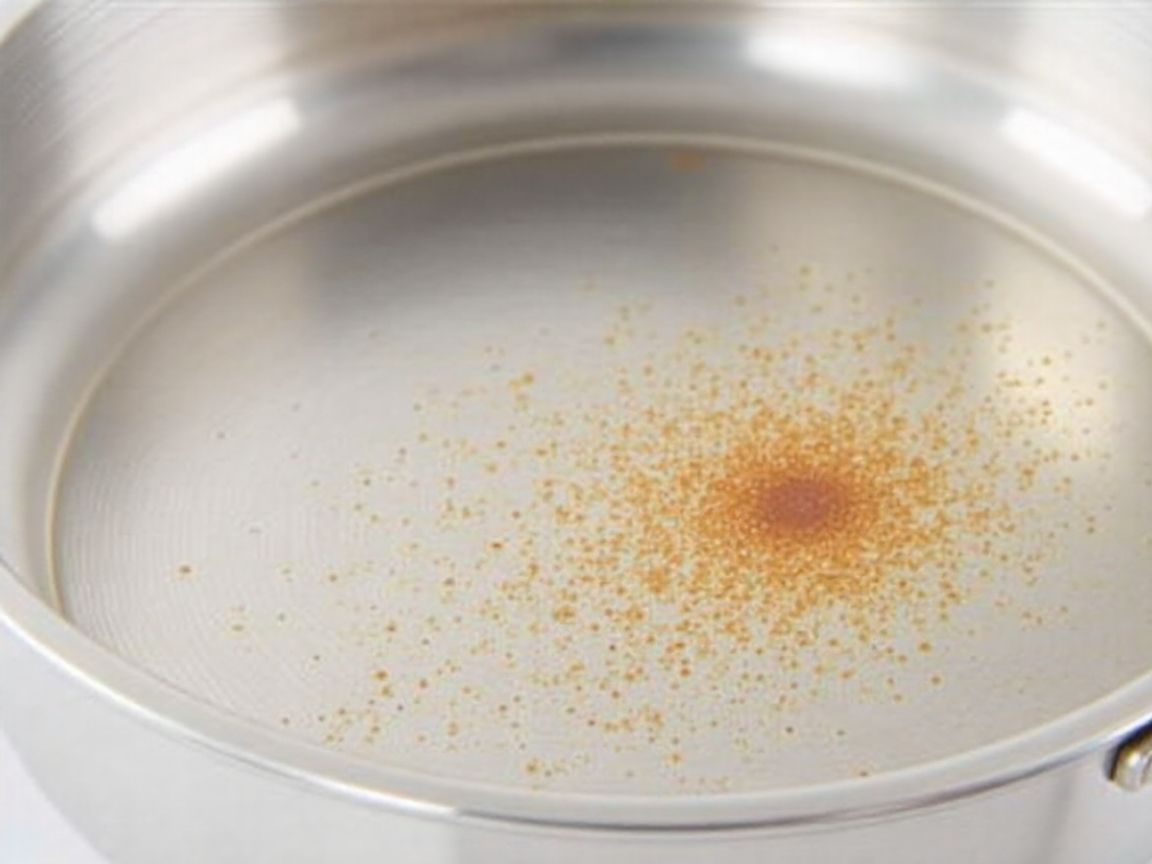Stainless steel looks great and usually resists Rust, but it can still develop rust spots over time. Things like water, salt, acidic foods, or not cleaning it properly can damage its protective layer and cause Rust. The good news is that you can remove Rust from stainless steel easily, often with simple ingredients you already have at Home.
Why Does Stainless Steel Rust?
Chromium in stainless steel forms a protective layer that helps prevent Rust. (Why Stainless Steel Does Not Rust: An In-Depth Explanation, 2024) If this layer gets damaged by moisture, salt, or acids, Rust can start to appear. Most of the time, this Rust is just on the surface and can be removed with a few easy methods.
5 Simple Ways to Remove Rust from Stainless Steel
You don’t need strong chemicals to get rid of Rust. There are several natural and effective ways to clean your stainless steel. Here are five simple methods that can help remove Rust and keep your stainless steel looking shiny.
1. Baking Soda
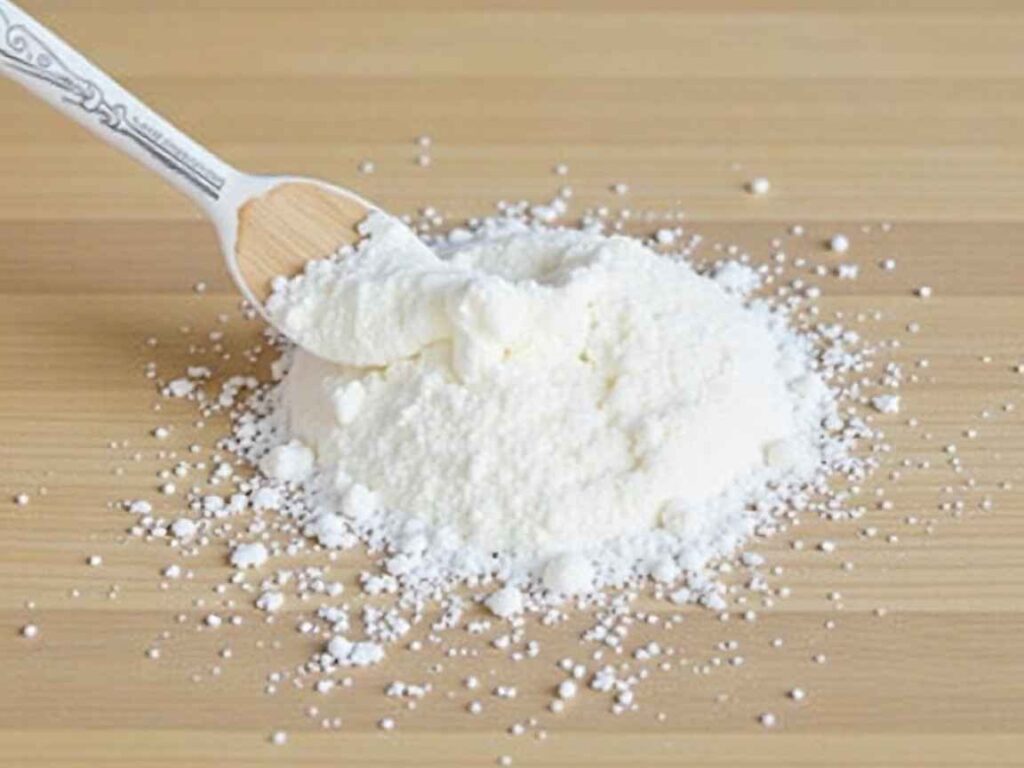
Baking soda is a gentle and non-toxic abrasive that works wonders on Rust without scratching the surface. Here’s how to use it:
- Method 1: Paste Application
- Mix one tablespoon of baking soda with 2 cups of water to create a paste.
- Apply the paste to the rusted area, gently rubbing it with a soft cloth in the direction of the grain.
- Let it sit for 30 minutes to 1 hour, then scrub gently with a soft-bristle brush or toothbrush.
- Rinse the area with water and dry thoroughly to prevent future Rust.
- Method 2: Direct Sprinkle
- For larger rust patches, sprinkle baking soda directly on a dampened surface.
- Let it sit for 30 minutes to an hour before scrubbing with a brush or sponge.
Avoid using harsh scrubbing pads or steel wool, as these can scratch the finish.
2. Lemon Juice
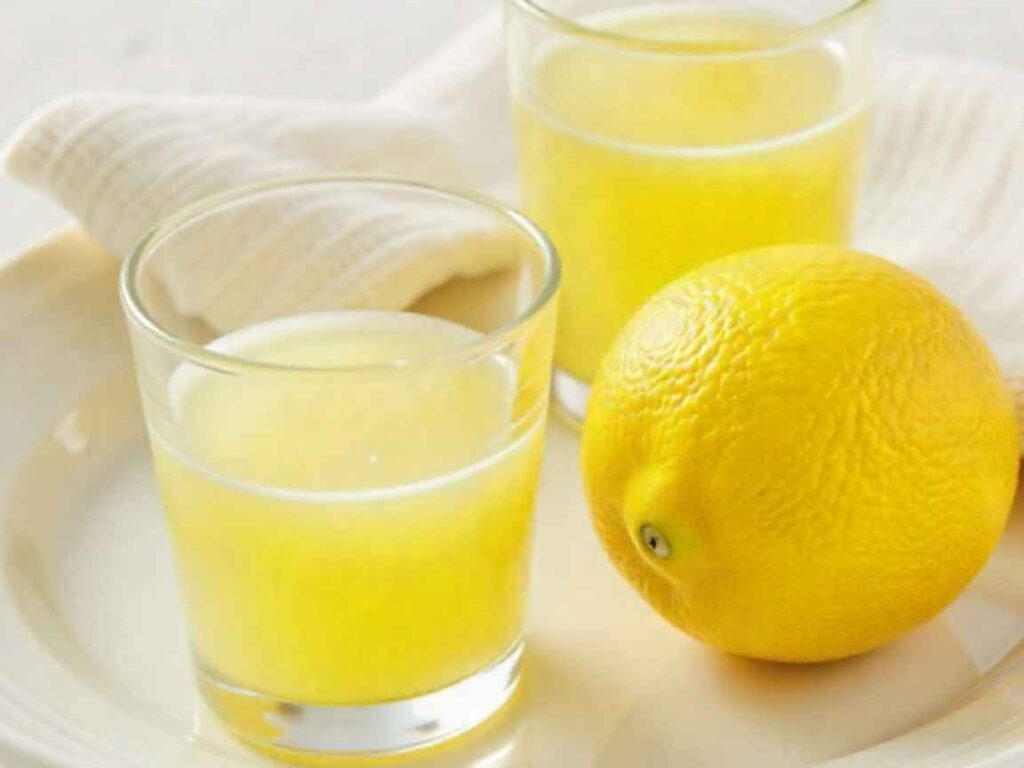
Lemon juice contains citric acid, which helps break down Rust while leaving a fresh scent behind. (Tips for Removing Rust, n.d.) To use lemon juice:
- Squeeze fresh lemon juice directly onto the rusted area or soak a cloth in the juice and apply it.
- Let it sit for about 5 to 10 minutes before scrubbing with a soft sponge or cloth, following the grain of the steel.
- Rinse with water and dry thoroughly.
For extra power, you can mix lemon juice with a pinch of salt to create a mild abrasive paste that works even better on stubborn spots.
3. Vinegar
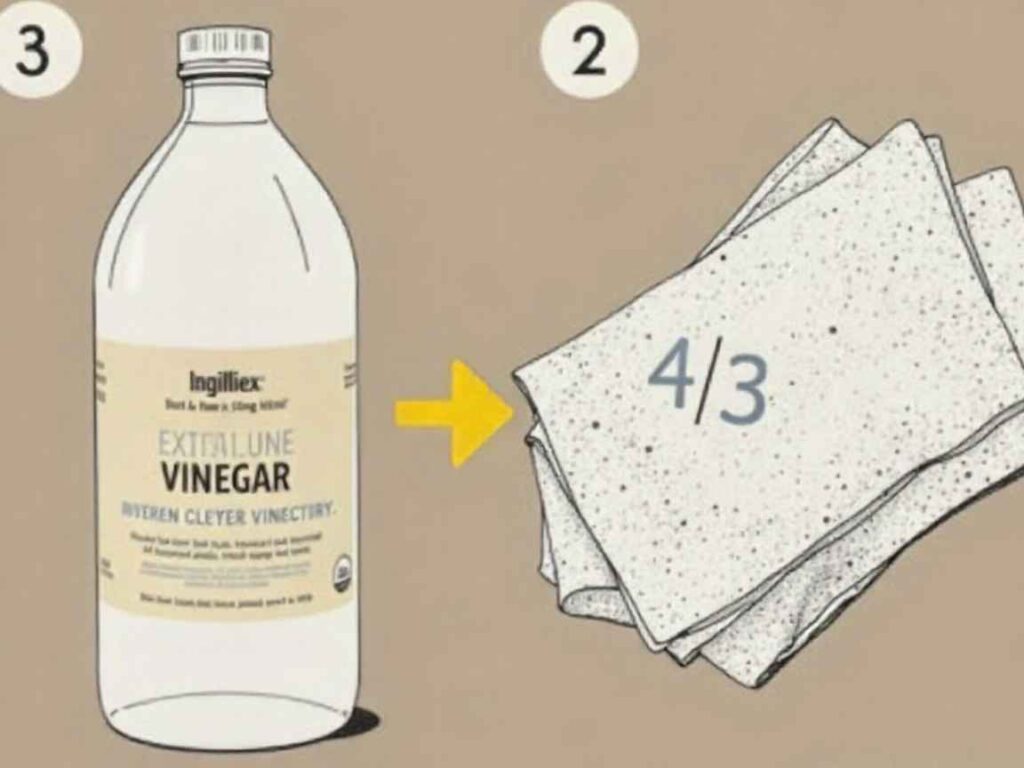
White vinegar is a natural acid that can dissolve Rust effectively. (How to remove Rust from stainless steel: a simple guide, 2023) Here’s how to use it:
- Soak a clean cloth or paper towel in distilled white vinegar and apply it to the rusted area.
- Let it sit for 5 to 10 minutes to help break down the Rust.
- After soaking, scrub gently with a soft cloth or sponge in the direction of the grain.
- Rinse with water and dry completely.
For tougher stains, combine vinegar with baking soda for a fizzing reaction that helps lift the Rust more effectively.
4. WD-40
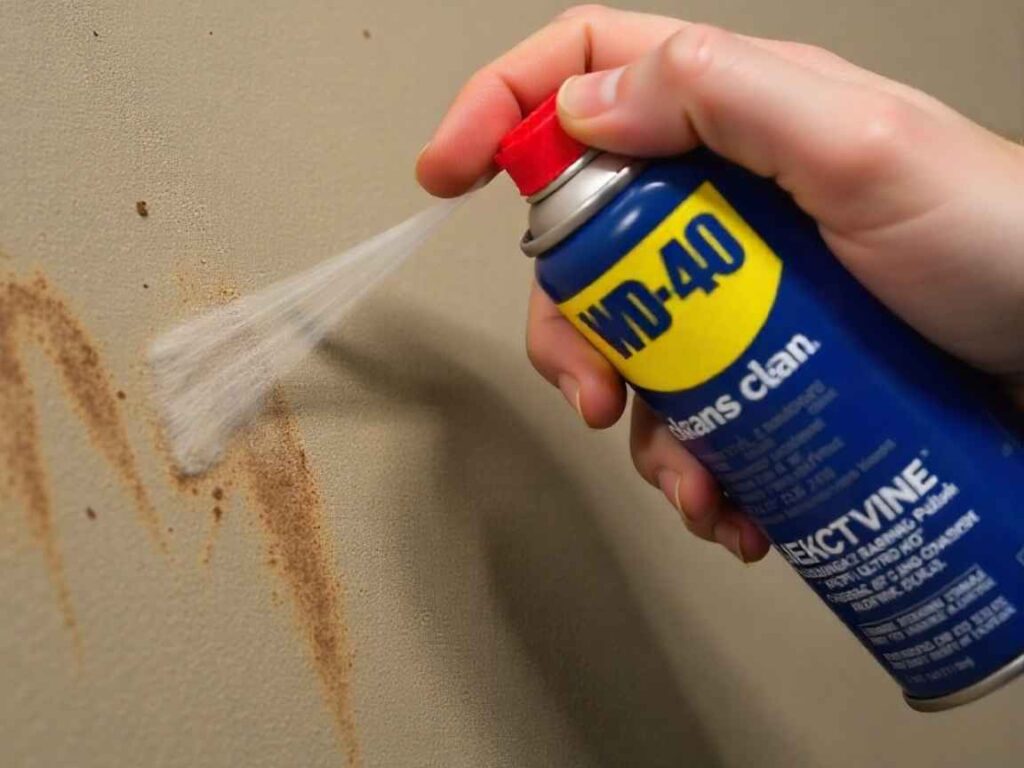
WD-40 is not only for lubrication; it can also help remove light surface rust. (Removing Rust, n.d.) Here’s how you can use it:
- Spray a small amount of WD-40 directly onto the rusted surface and let it sit for a few minutes.
- Gently scrub the area with a soft cloth or sponge, always following the direction of the grain.
- Wipe off any excess WD-40 with a clean, damp cloth, then dry the surface thoroughly.
For larger or more stubborn rust patches, you may need to repeat this process or let the WD-40 sit longer before scrubbing.
5. Oxalic Acid Cleaners
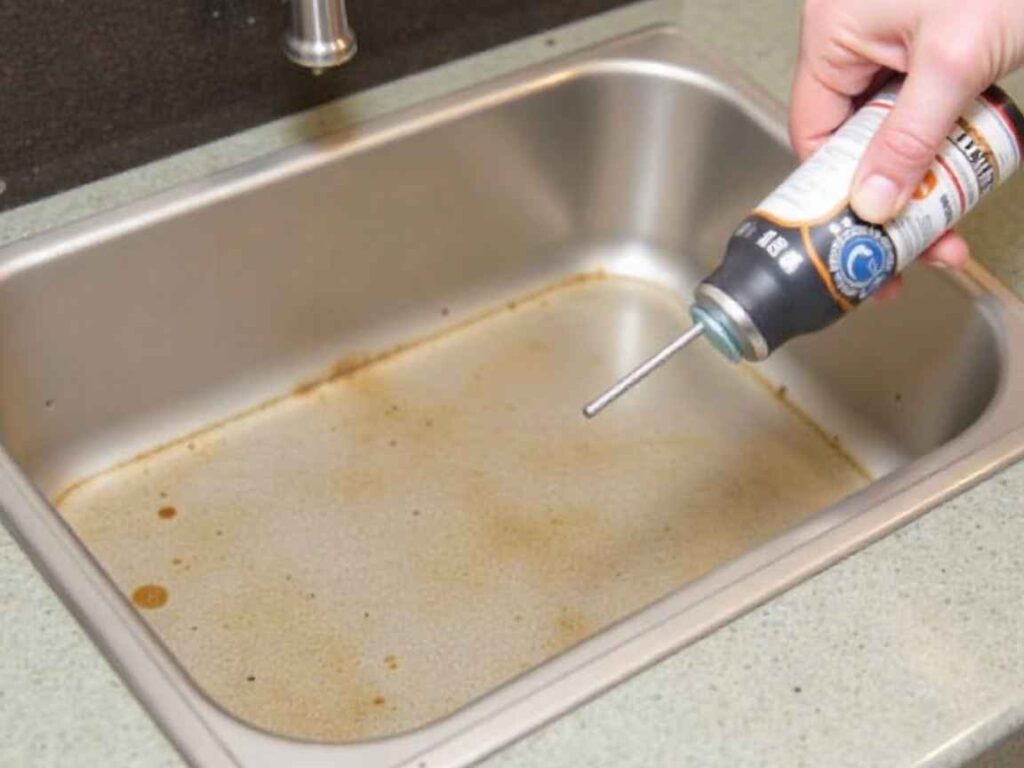
When gentler methods don’t quite do the job, oxalic acid-based cleaners like Bar Keepers Friend can be highly effective. (Bar Keepers Friend: Clean & Restore Stainless Steel, n.d.) To use an oxalic acid cleaner:
- Apply the product according to the manufacturer’s instructions, usually using a soft, damp sponge.
- Gently scrub the rusted area along the grain of the stainless steel to avoid scratches.
- Rinse thoroughly with water and dry completely.
This method is ideal for Rust caused by wet cast iron or other metals left on stainless steel surfaces.
Additional Tips for Maintaining Stainless Steel
To keep your stainless steel looking its best, adopt these cleaning habits:
- Clean with the Grain: Always scrub or clean in the direction of the steel’s grain to avoid scratching.
- Dry Thoroughly: Moisture is one of Rust’s biggest enemies, so make sure to dry your stainless steel surfaces after cleaning or spills.
- Use Soft Tools: Stick to soft cloths, non-abrasive sponges, or nylon brushes. Avoid harsh steel wool pads or brushes, which can scuff and damage the surface.
- Act Fast on Spills: Clean up acidic or salty spills, like tomato sauce or saltwater, immediately to prevent corrosion.
- Regular Maintenance: A simple mixture of warm water and mild dish soap is usually enough for everyday cleaning. Rinse and dry thoroughly to prevent water spots and Rust.
What Not to Use on Stainless Steel
Some cleaning products and tools can damage your stainless steel surface. Avoid these:
- Bleach or any cleaner containing chlorine
- Steel wool or metal-bristled brushes
- Abrasive powders that aren’t specifically made for stainless steel
- Cleaners with harsh chemicals like fluorine, iodine, bromine, or chlorine compounds (Chemical Disinfectants | Infection Control | CDC, 2023)
- Rust removers designed for other metals (they may be too harsh for stainless steel) (ZERUST RUST REMOVERS | Allen Woods Group, n.d.)
How to Prevent Rust on Stainless Steel
Prevention is always the best approach. Here are a few tips to keep your stainless steel rust-free:
- Minimize Moisture: Keep surfaces dry, especially in areas like sinks, dishwashers, and refrigerators. Wipe up spills as soon as they happen.
- Regular Cleaning: Wash stainless steel regularly with warm water and mild dish soap, using a soft cloth or sponge. Always rinse and dry the surface thoroughly.
- Use Manufacturer-Recommended Cleaners: If you’re unsure, consult the manual for your stainless steel appliances or cookware to use the recommended cleaning products.
By following these simple steps, your stainless steel surfaces will stay shiny and rust-free for years to come!







